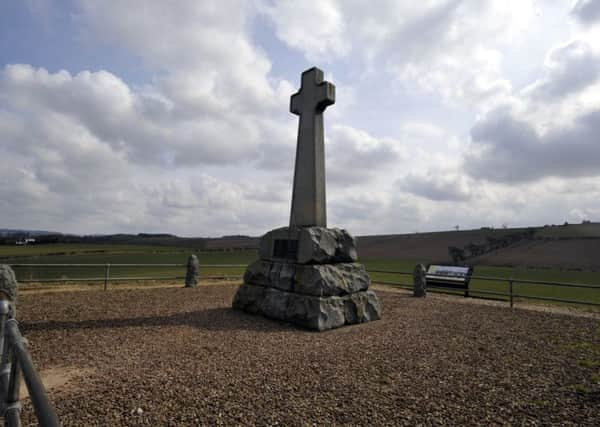Glendale, History Society


The Flodden Pathways project focussed on the aftermath of the battle, examining maps, footpaths and place names, and noting differences North and South of the border.
It set out to identify the routes taken by James IV and his army going to Flodden in 1513, and of the defeated troops straggling back, looking at roads, river crossings, buildings and muster and battle sites. It concentrated on more than 20 ecclesiastical sites and on Norham and Wark castles, which were taken by the Scottish army.
Advertisement
Hide AdAdvertisement
Hide AdEstimates of the number of armed men vary between 20,000 to 100,000. Aong with non-combatants, it is likely there were at least 40,000 people from all over Scotland, plus animals.
The majority of the army journeyed from Edinburgh by Haddington, and assembled at Ellen. The artillery came via Dalkeith and Kelso, crossing the Tweed at Coldstream.
The likeliest route for retreat is thought to be the Staw Road, which runs from Kirknewton through Kirk Yetholm to Otterburn.
It was a wet, late summer so streams and rivers were avoided. The Tweed was a major obstacle. The Border Survey (1541) lists 31 fords between Berwick and Crabbestream, but there was only one bridge, at Twizel.
Advertisement
Hide AdAdvertisement
Hide AdJames and 5,000 to 6,000 men were killed at Flodden, and churches and monasteries may have been places of sanctuary for the survivors.
Located along the Staw Road, St Ethelreda’s Chapel is mentioned in 13th to 16th century texts, but its location was unknown. The team identified four possible sites, excavating one on a low ridge by a flood plain to reveal a wall and fragment of medieval pottery.
The medieval walls and pottery of the nunnery at Abbey St Bathans may be relevant, while a project at the Lennel found the floor plan of a church abandoned in 1704.
Excavations in 2016 at Norham Castle found only later roadways. At Wark Bastle, they revealed the footprint of St Giles’ Chapel, medieval coins, weapon heads and deep pits containing fragments of pottery, suggesting a site where the army was fed.
Advertisement
Hide AdAdvertisement
Hide AdExcavations on Holy Island in 2017 made new discoveries. On the Heugh were found the footing stones of a rectangular structure with two chambers and four doorways. Aerial photographs show evidence of stone walls and post holes.
Near the war memorial, an extensive stone platform was found, possibly the base of a tower. The Lantern Chapel or Lookout Tower has footings and thick walls, and a void cut into the whinstone revealed the remains of seven individuals. The full results are yet to be published.
The next meeting is on February 14, when Wade Sherman will speak on Alnwick Castle and the History of St Cloud State University.